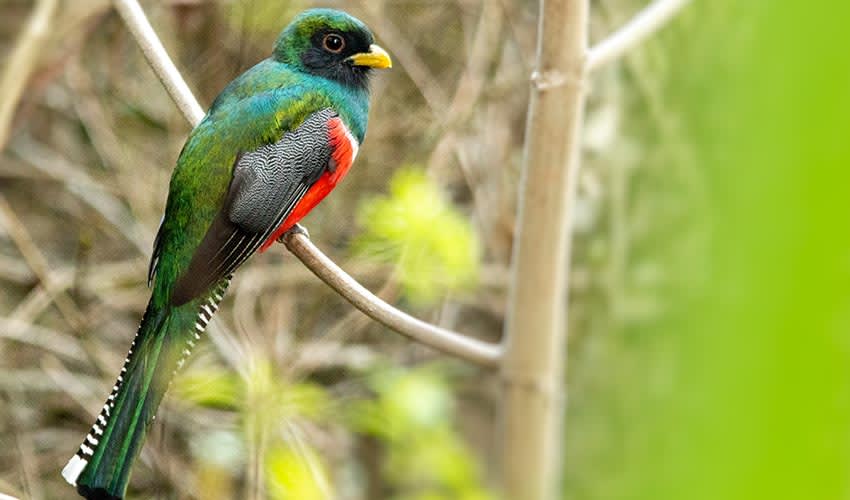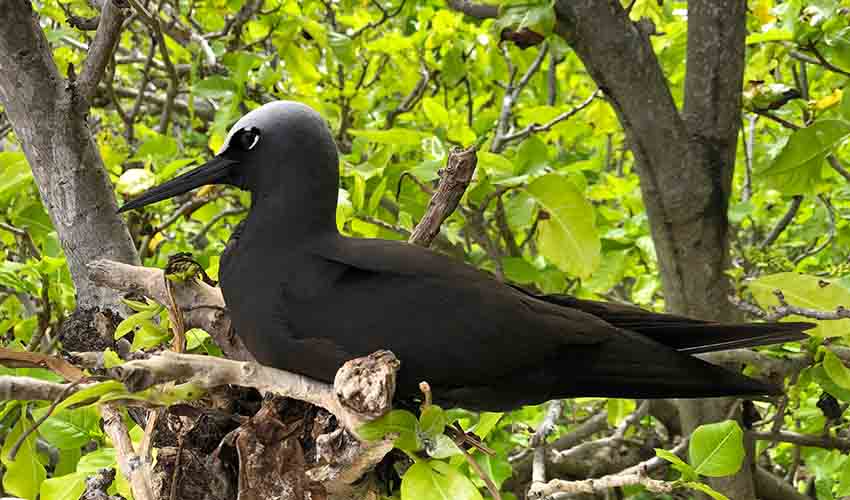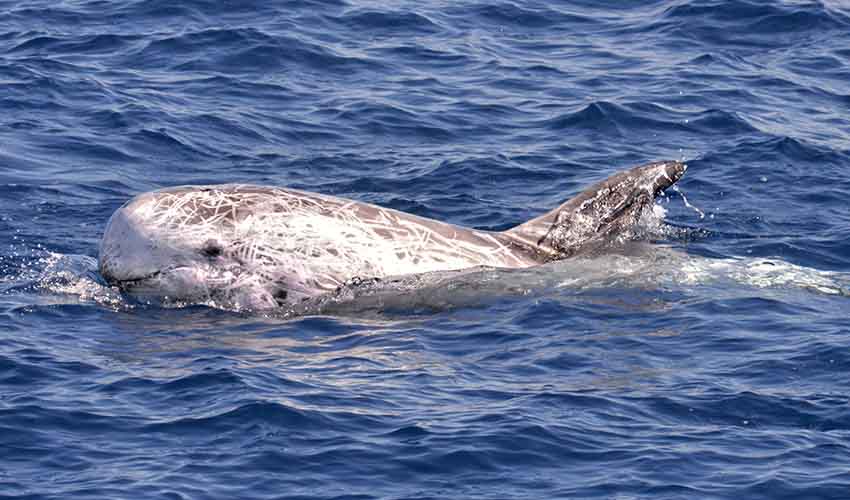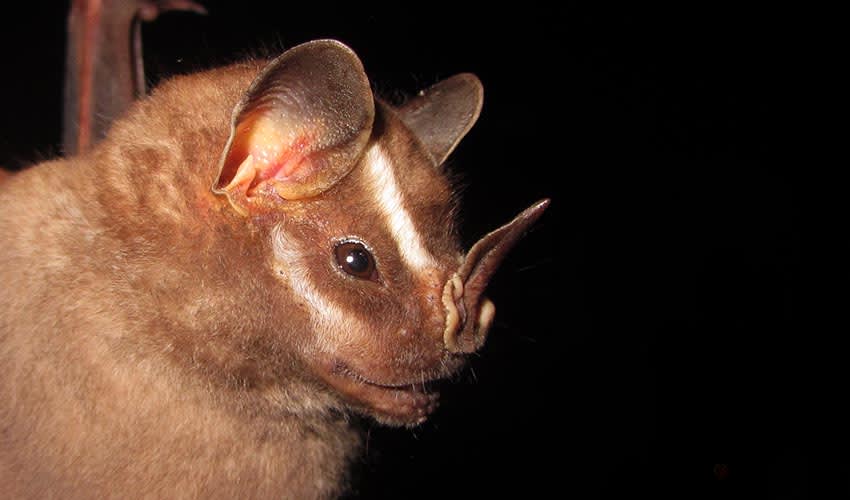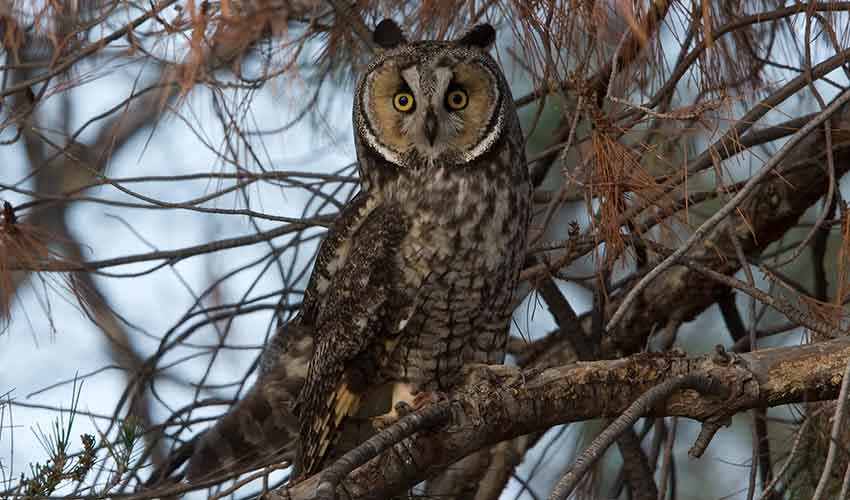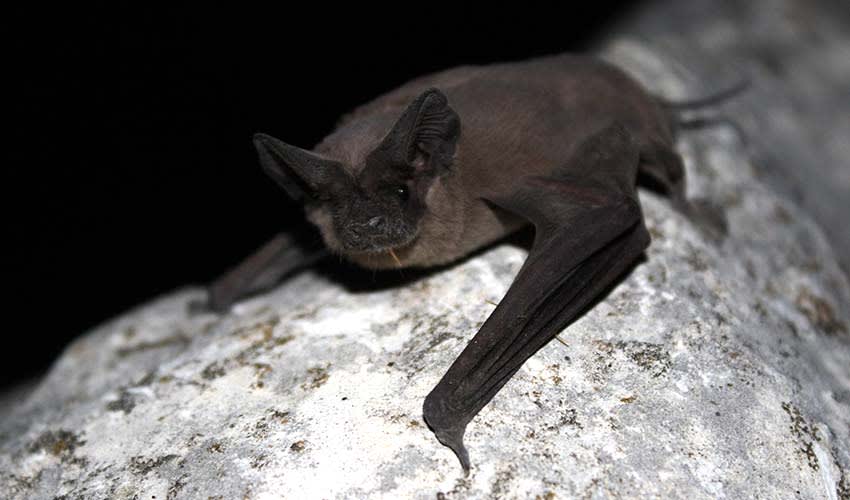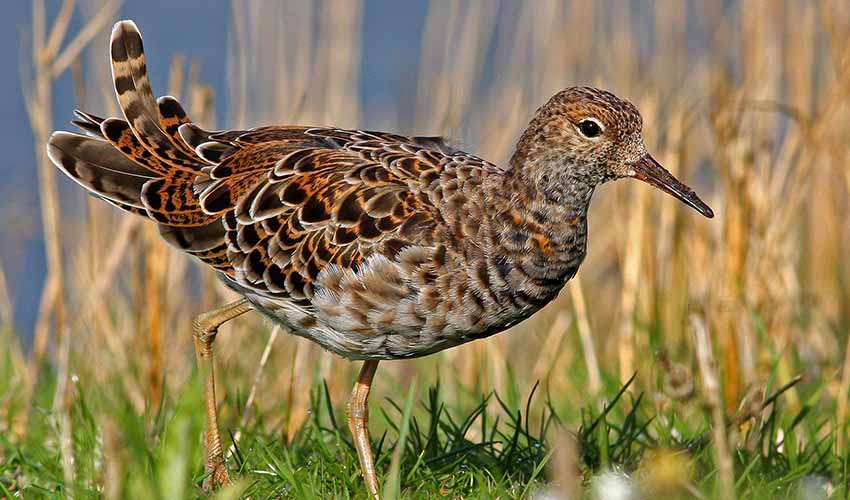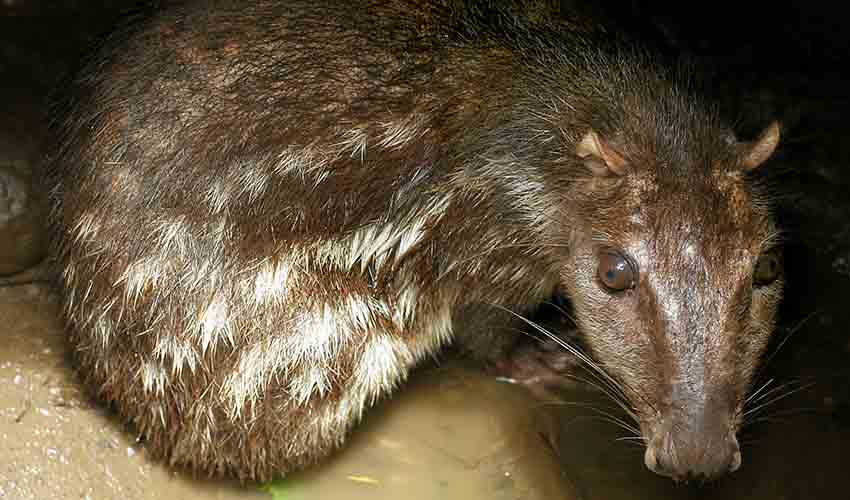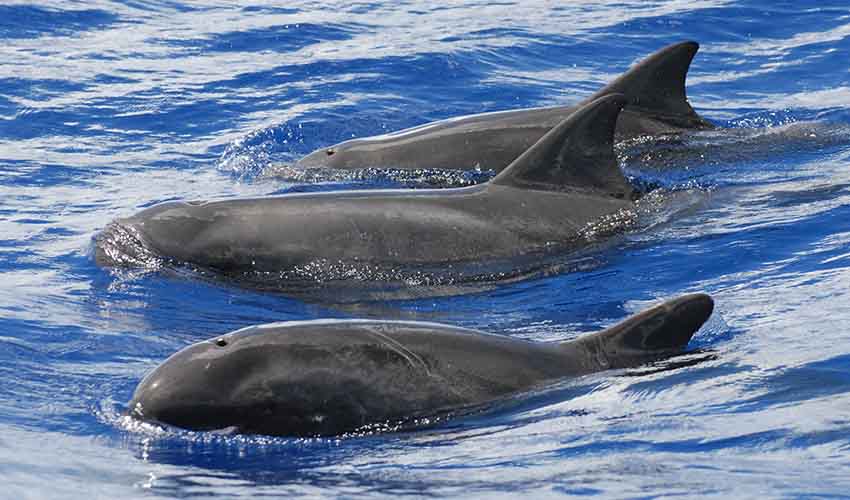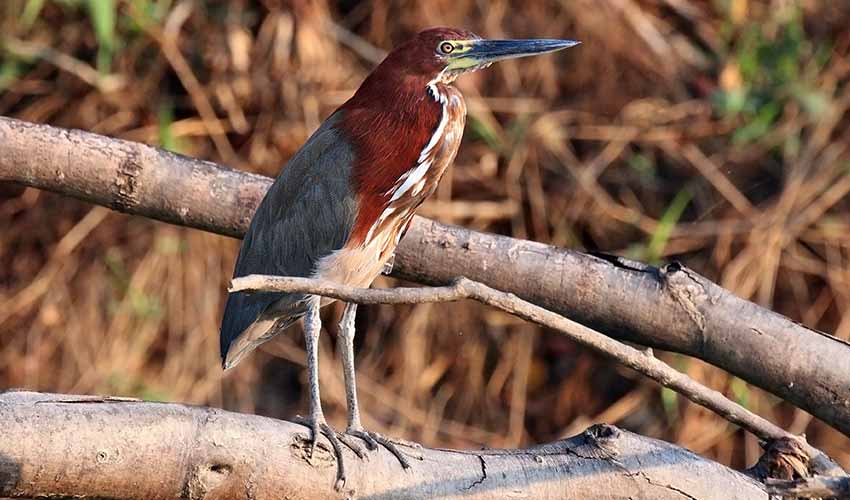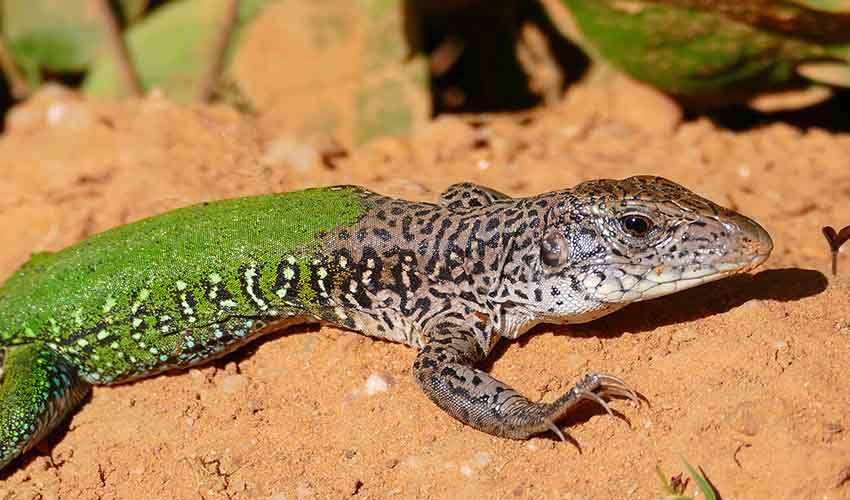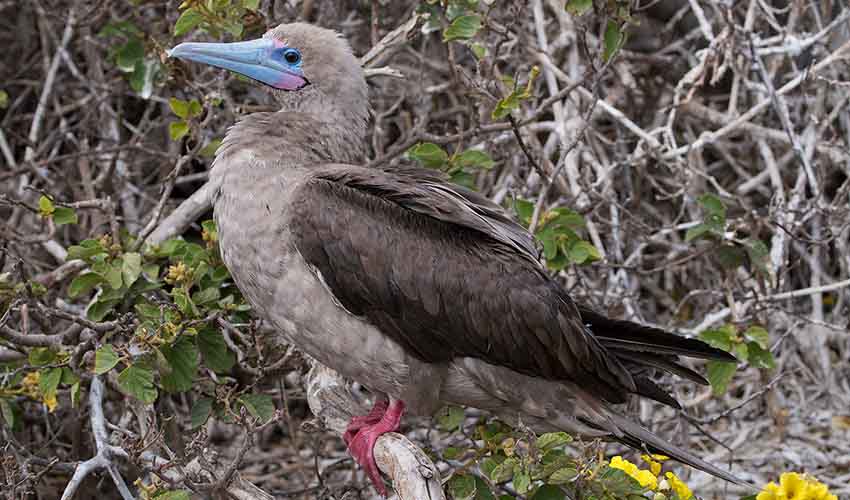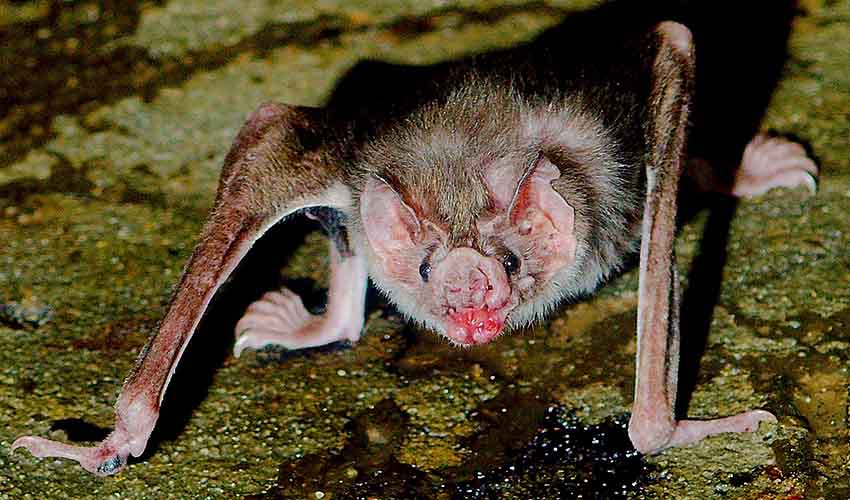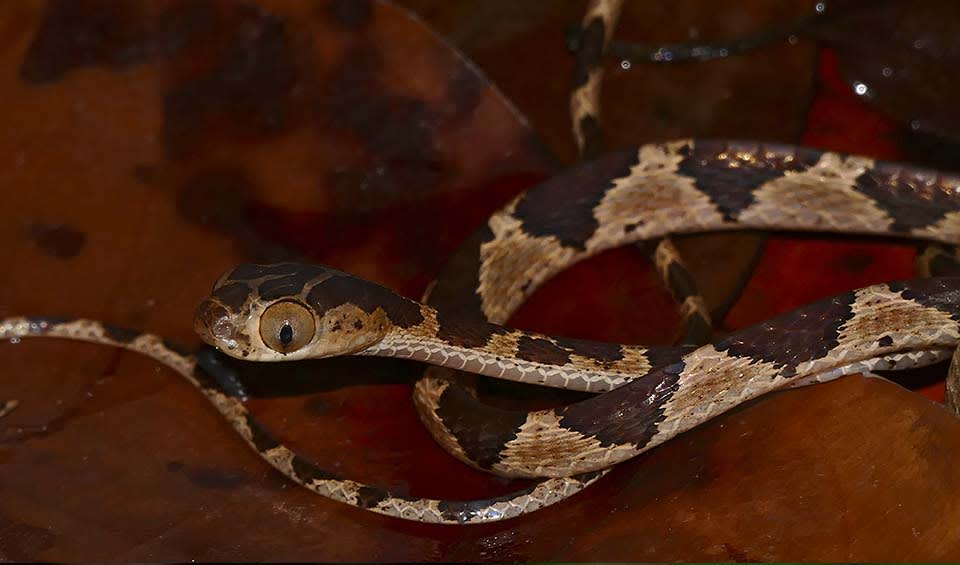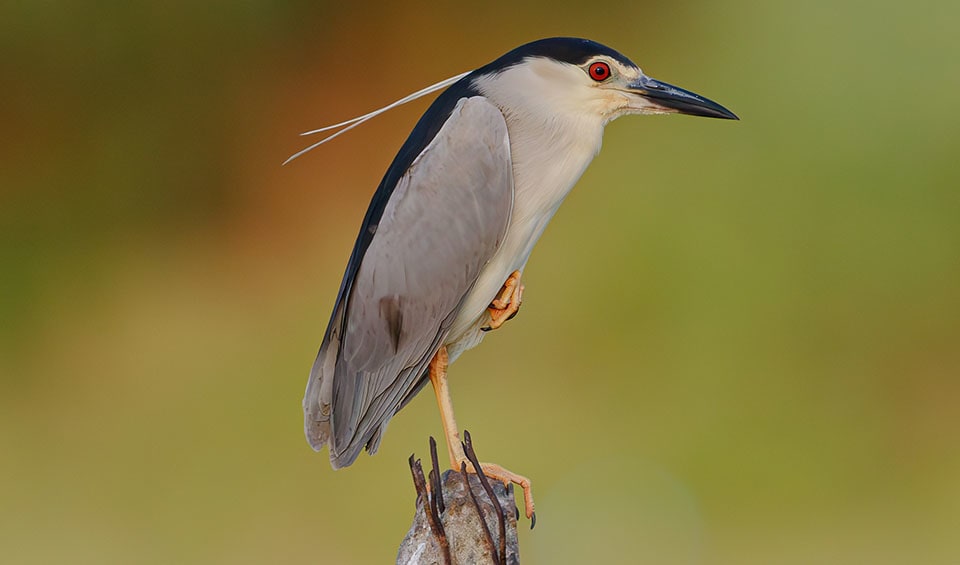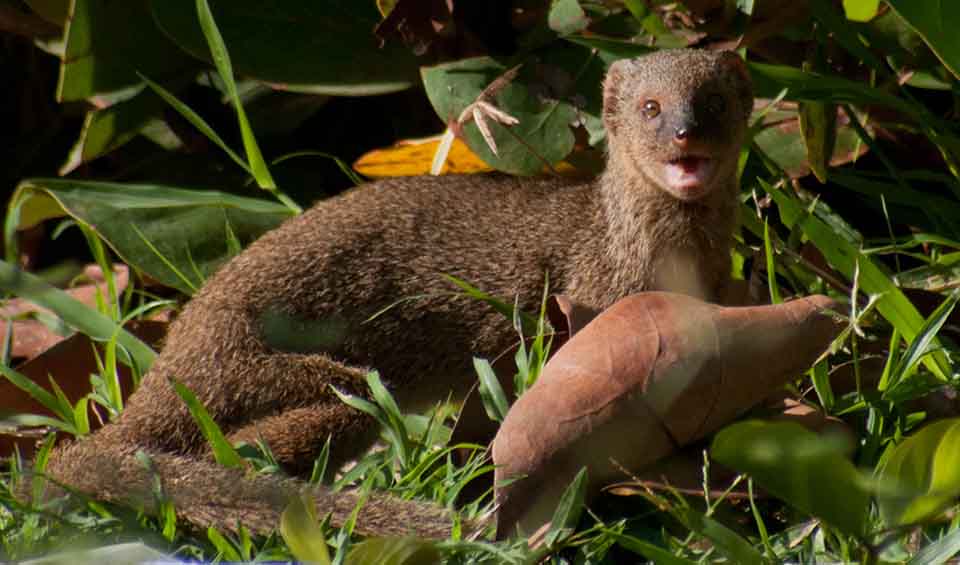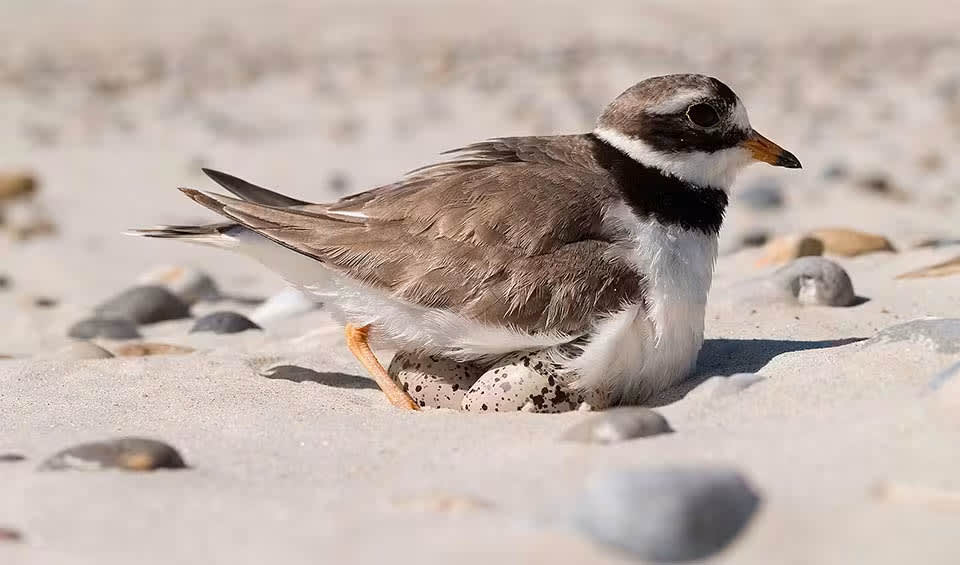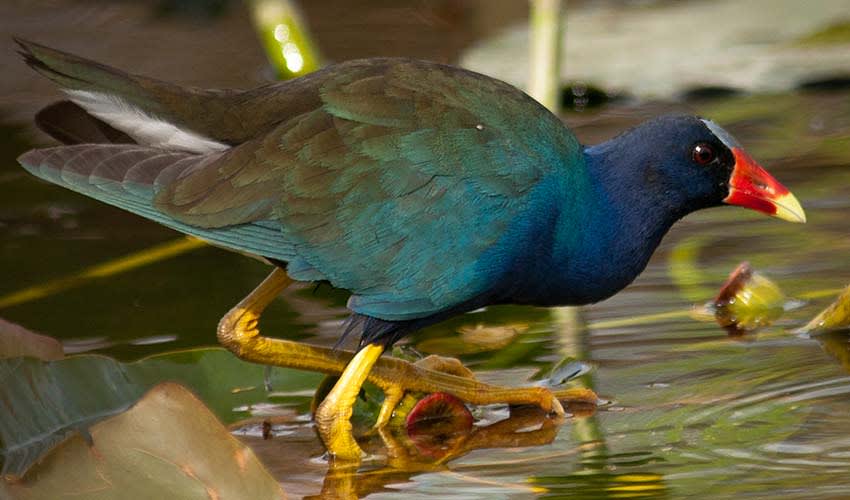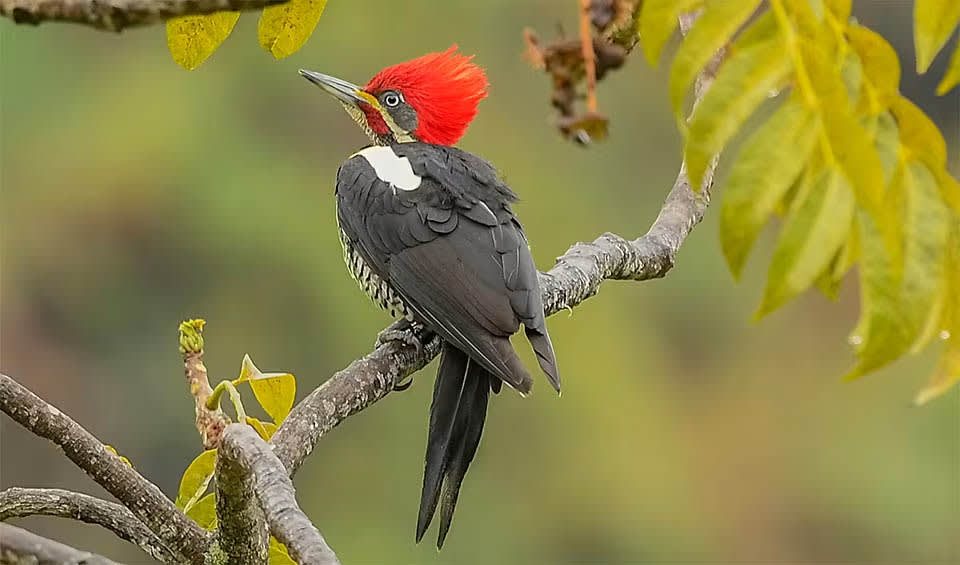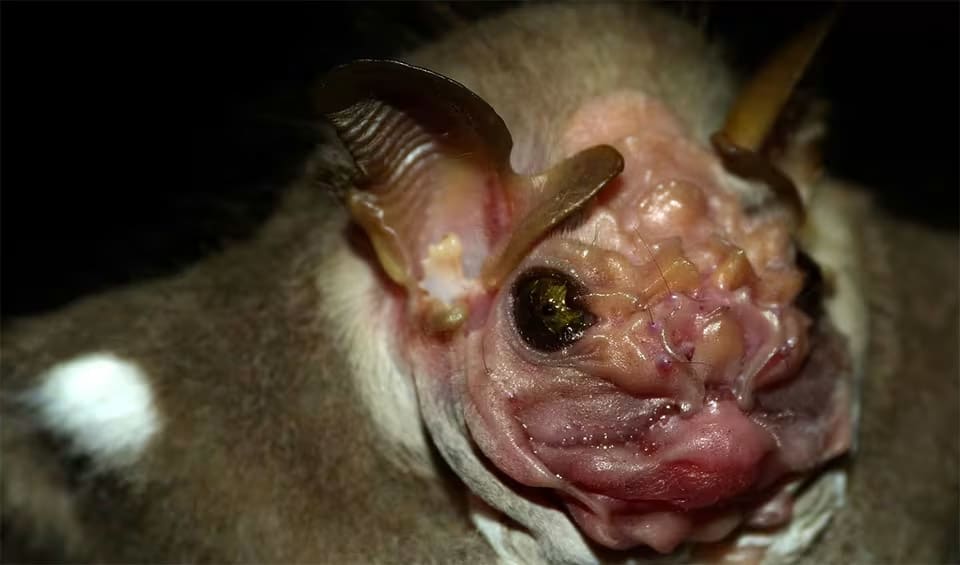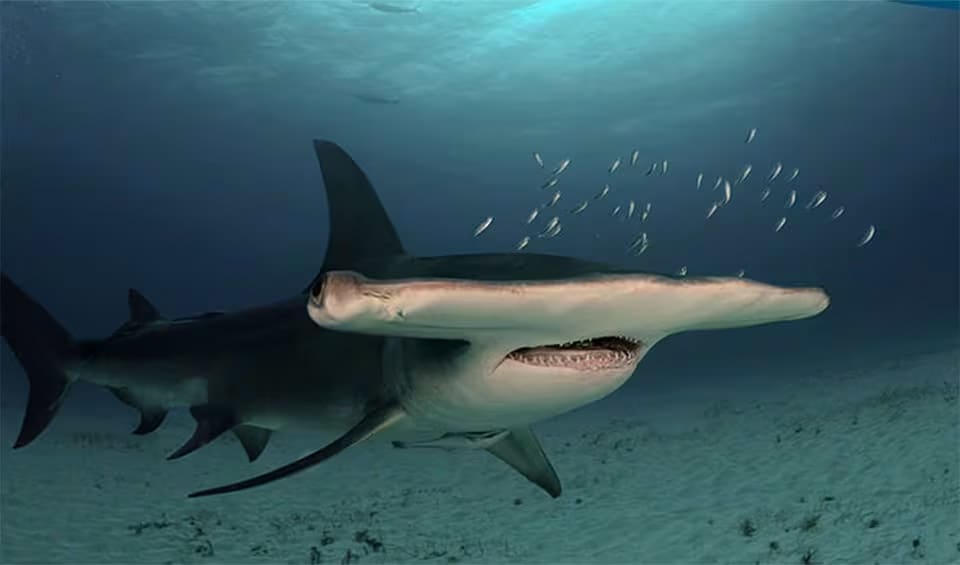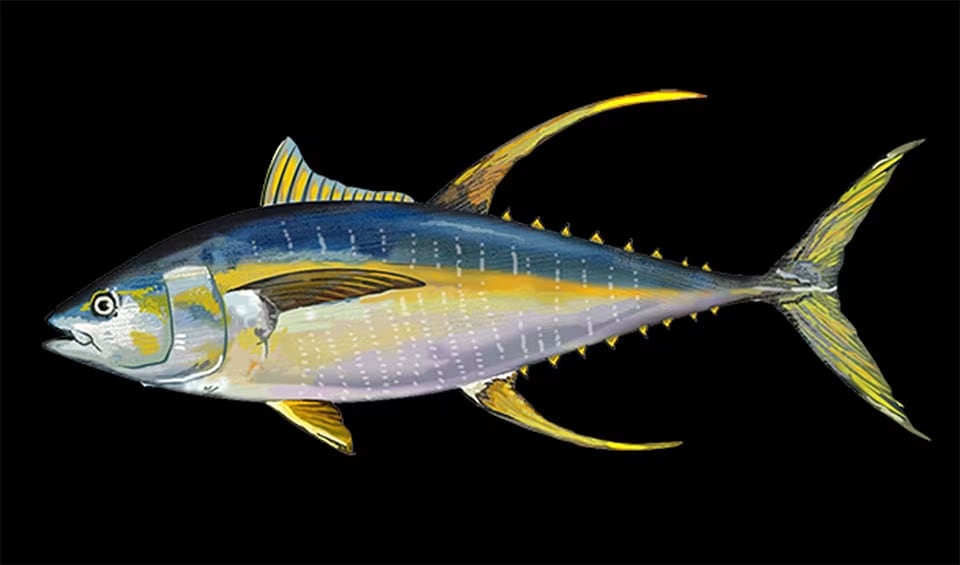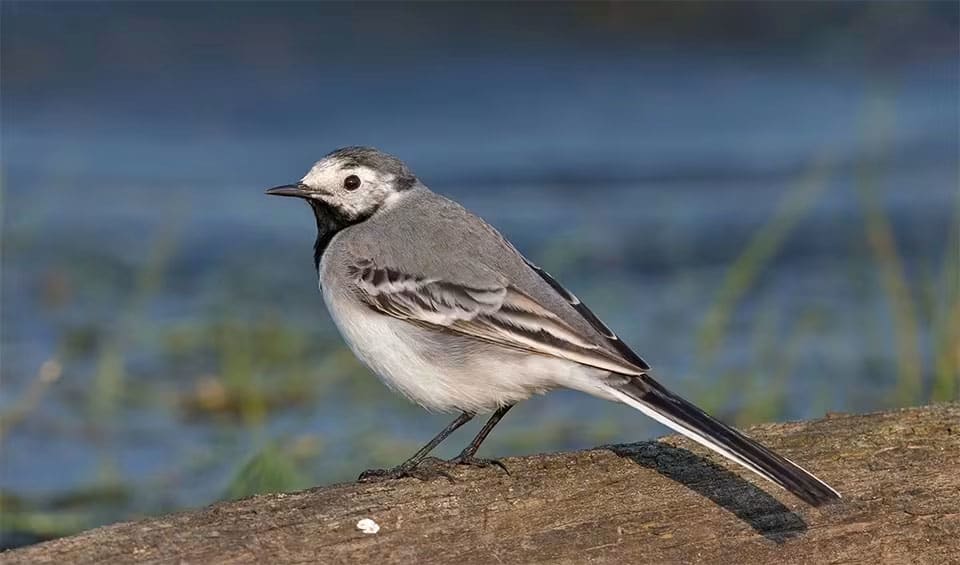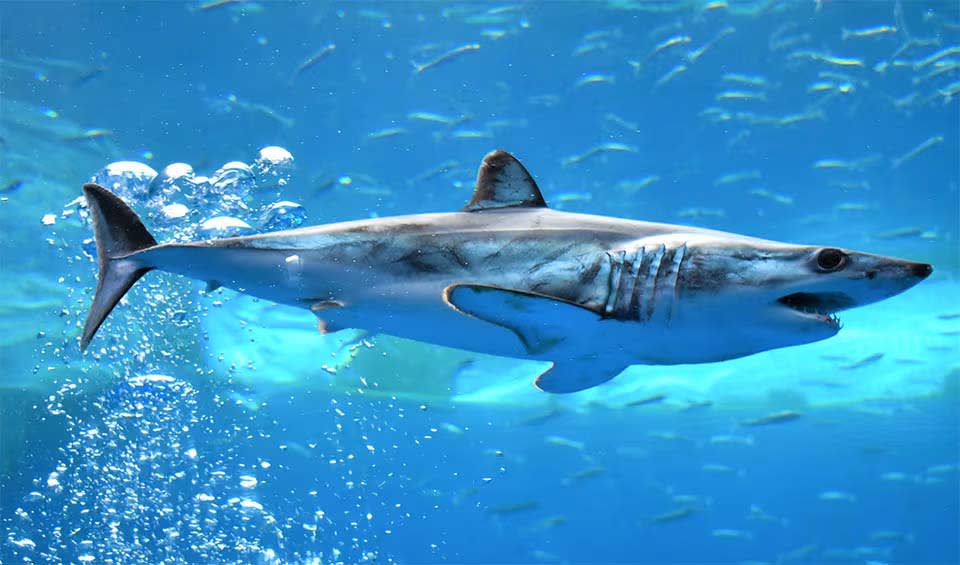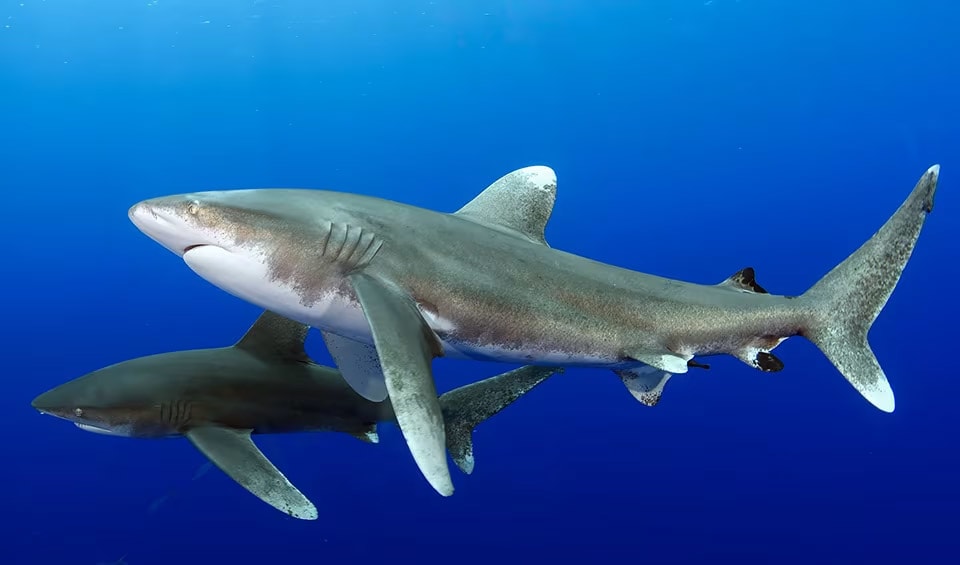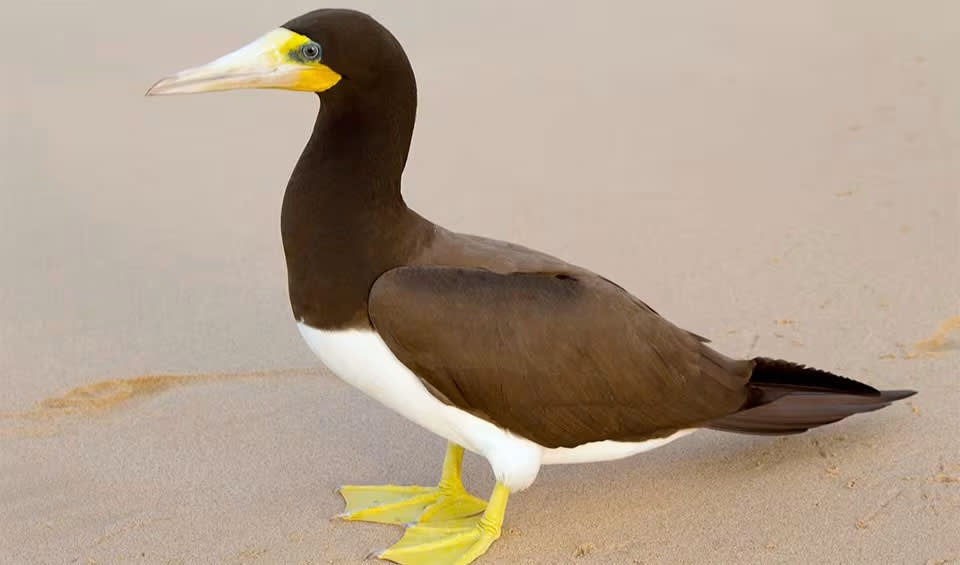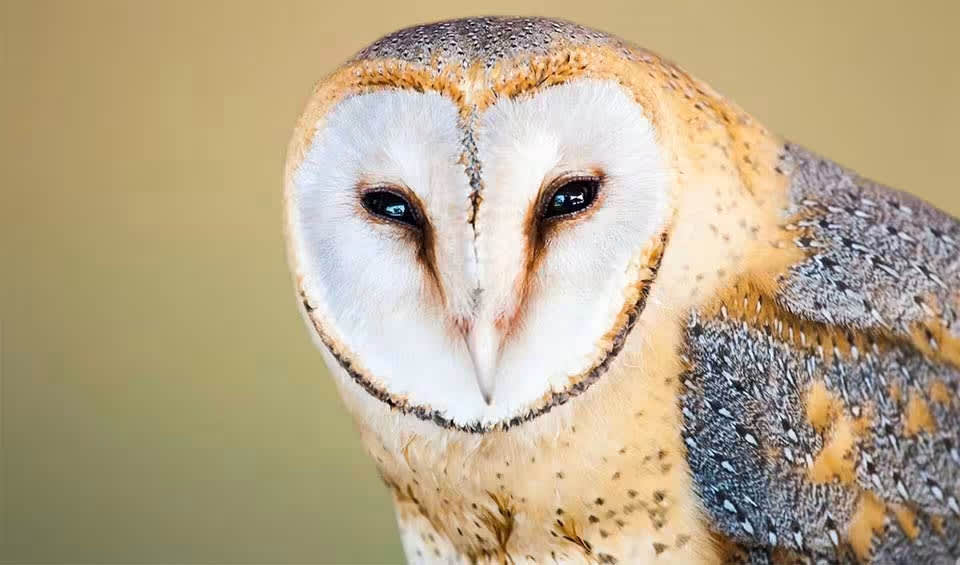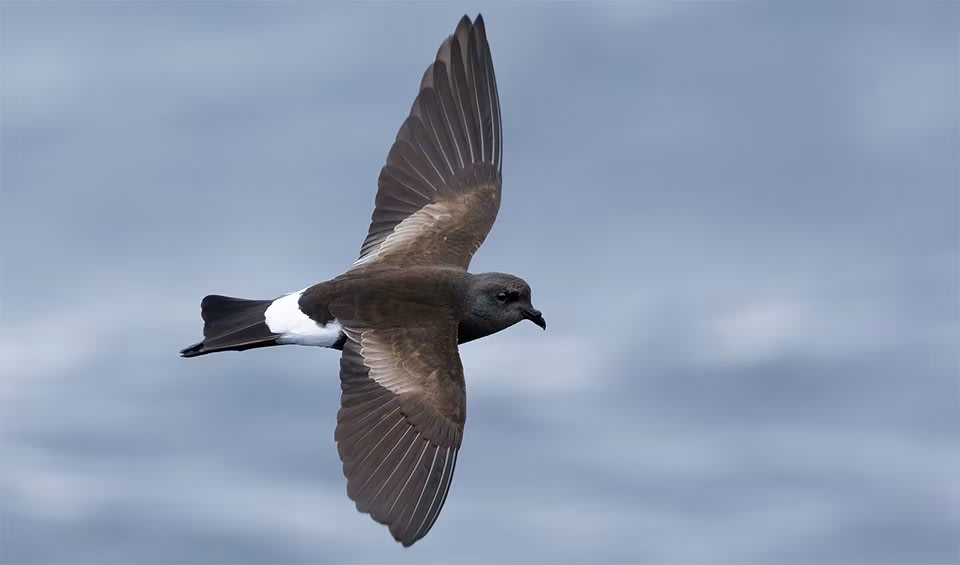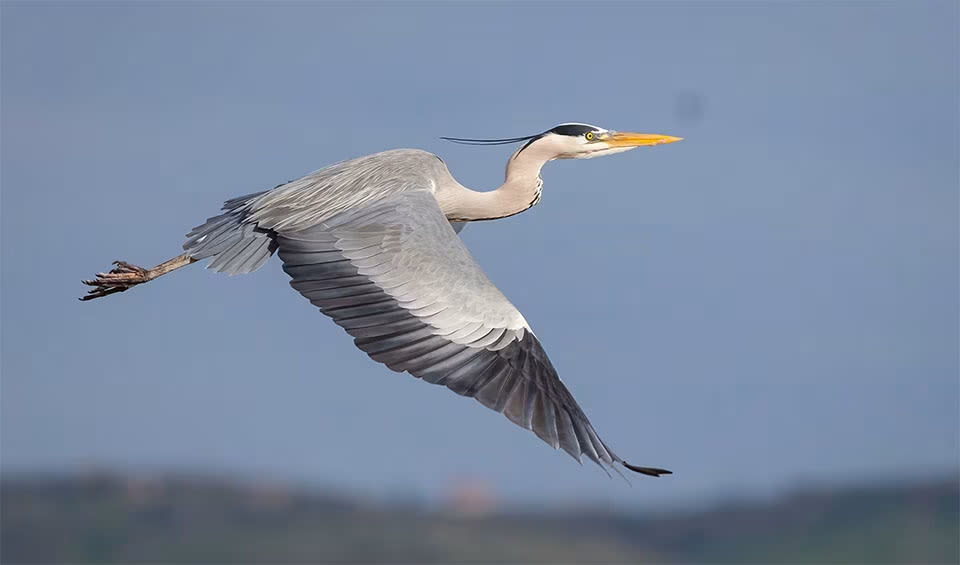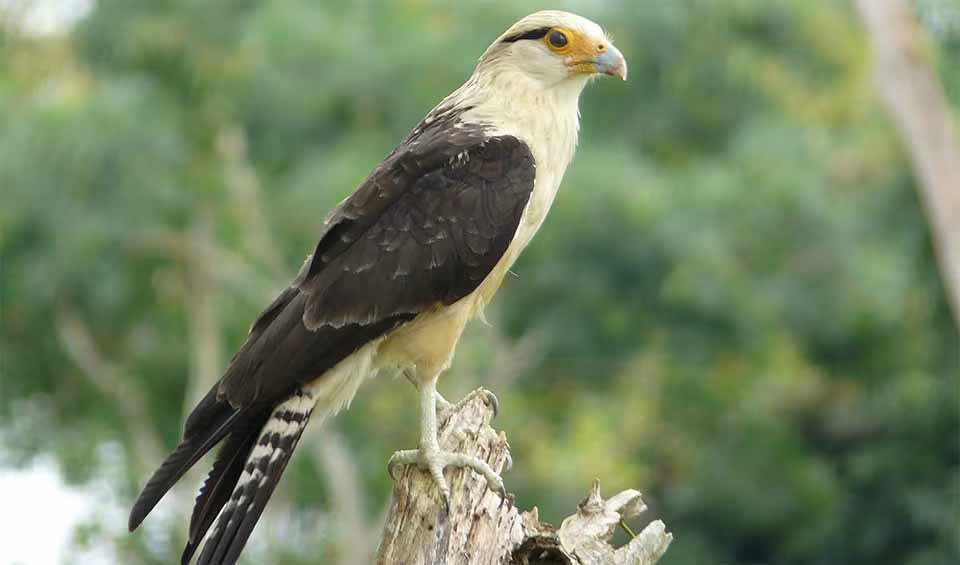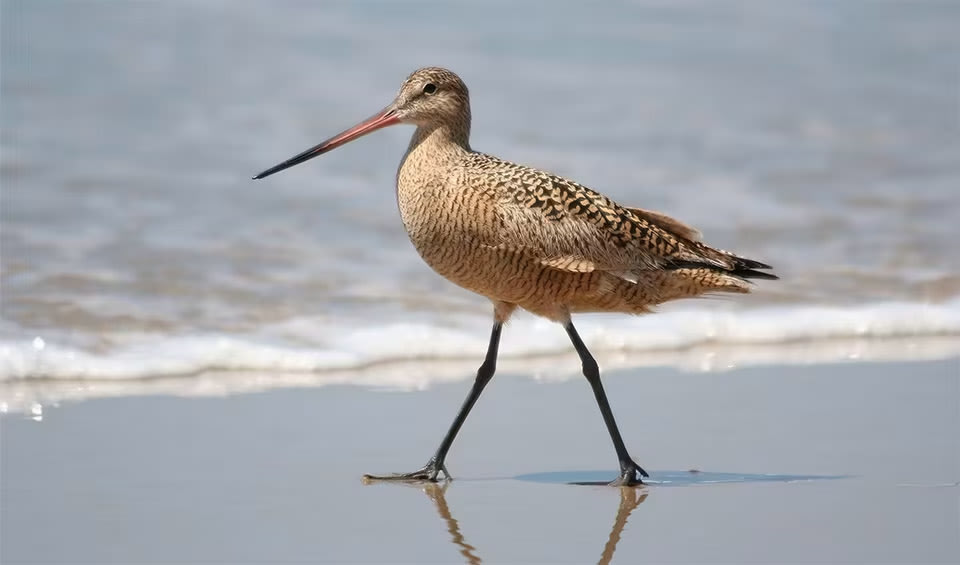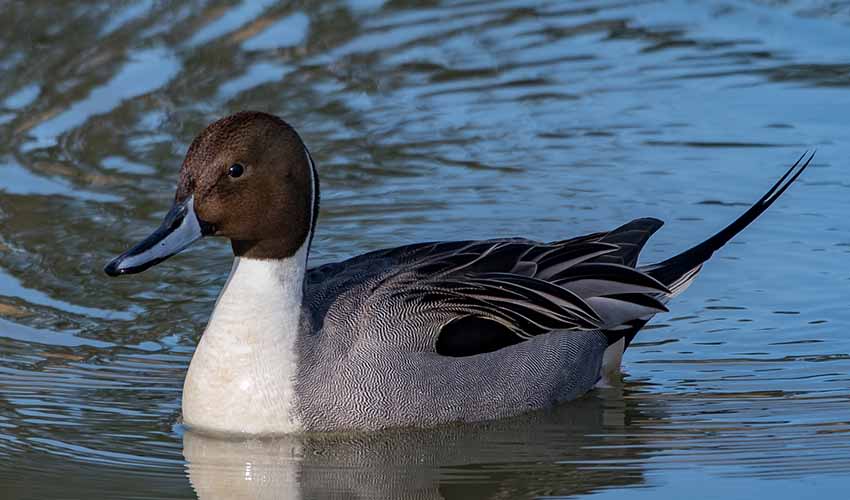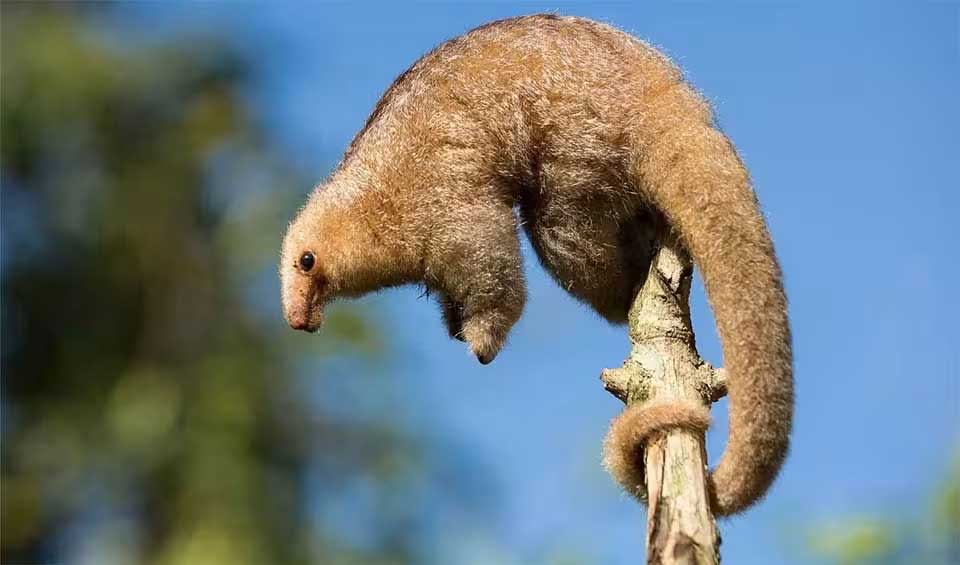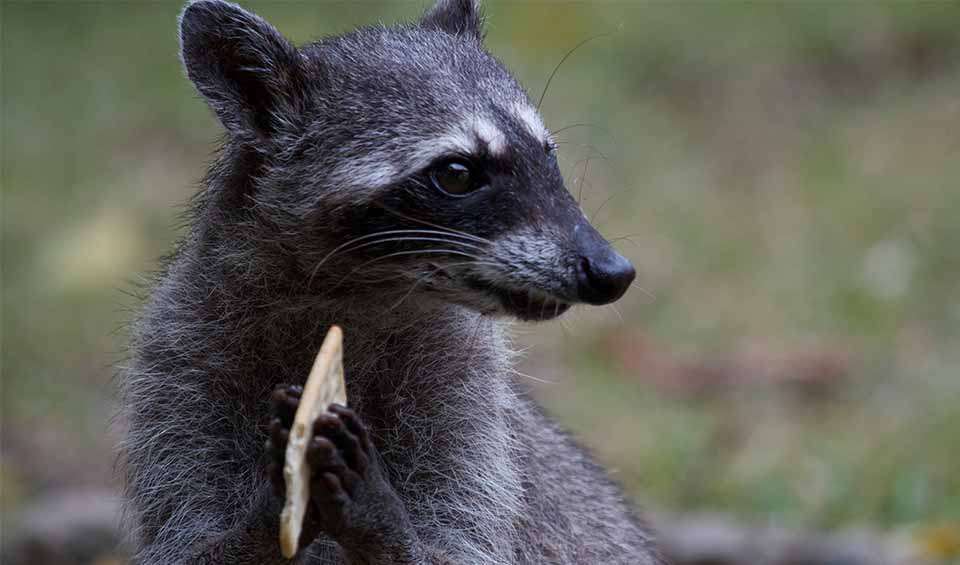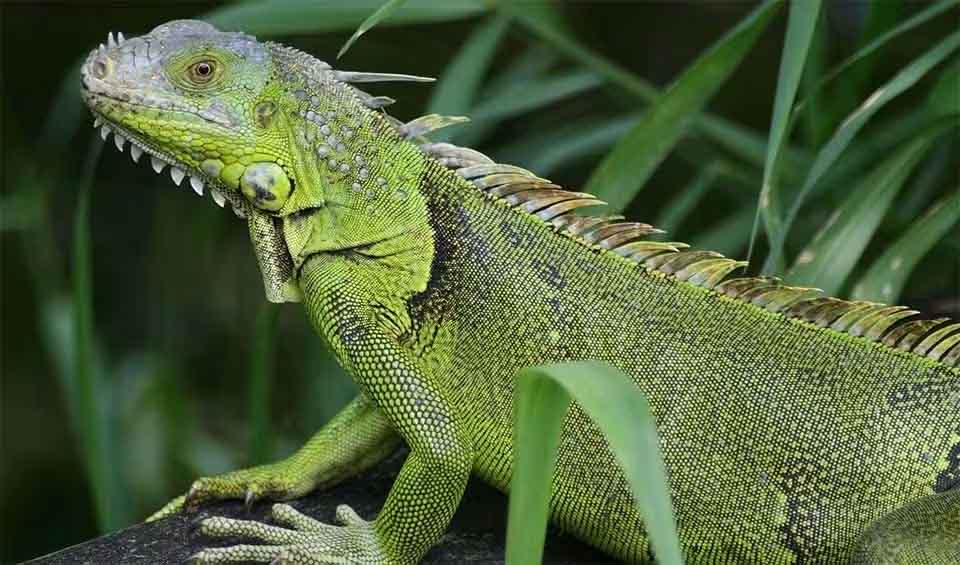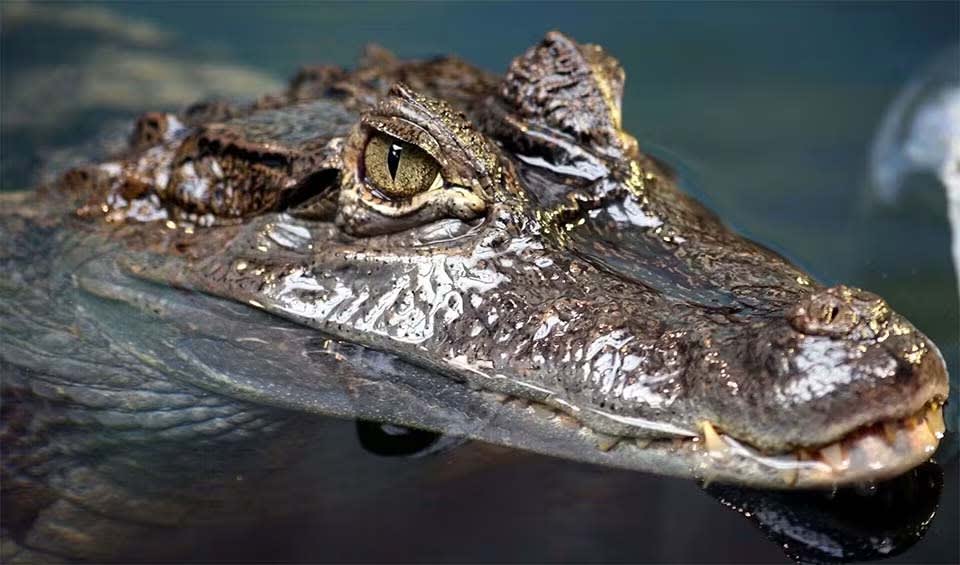Search for Trinidad & Tobago
Bobolink
Symbols of open summer fields and joyful wild song
Indigo bunting
Under certain angles, the feathers can look almost black
Southern American bushmaster
One of the longest venomous snakes in the Americas
Collared trogon
Spend so much time sitting still that birdwatchers sometimes double-check to see if they’re statues
Maguari stork
“Maguari” comes from the Tupi language, roughly translating to “heavy bill.” Not the most poetic nickname, but accurate!
Caspian tern
A heavyweight champ — elegant, yes, but you don’t want to mess with that beak
Black noddy
Black feathers, white cap, sleek shape — it’s the tuxedo of the bird world
Rufous nightjar
With feathers patterned like dry leaves, it can sit right in front of you and you’d still swear it wasn’t there
Striped dolphin
Among the most athletic dolphins, known for their spectacular leaps and spins that can reach several meters high
Risso’s dolphin
Sometimes called the “scars in the water” thanks to their many white markings
American redstart
One of the most admired warblers across the continent
Great stripe-faced bat
Despite its somewhat fearsome scientific name, it does not drink blood—it feeds exclusively on plant material
Jamaican fruit bat
Can detect fruit ripeness from several meters away—a skill that rivals that of many birds
Nine-banded armadillo
Found all over the Americas, it is the most widespread species of all armadillos
Long-eared owl
Its flight is nearly soundless, thanks to specially fringed wing feathers that disrupt air turbulence
Short-eared owl
Defies the usual “creature of the night” stereotype by thriving in open landscapes and often hunting boldly in daylight
Lemon shark
Their “lemon” color actually changes slightly depending on light and habitat
Spotted eagle ray
Though they possess venomous spines near the base of their tail, they rarely use them except in self-defense
Blue-gray tanager
Often bathe in rainwater pools or birdbaths
Red brocket deer
Instead of fleeing immediately when threatened, they often freeze completely still
Tent-making bat
Well known for its unusual behavior of modifying leaves into makeshift shelters
Mexican free-tailed bat
Their guano deposits have historically been harvested as fertilizer
Common opossum
50 teeth? That’s a serious set of chompers for crunching insects, fruit, or even bones!
Sand martin
A bird that carries the rhythms of the seasons on its wings
Ruff
Looks ordinary—but transforms into one of the most extravagant birds during breeding season
Lowland paca
The spotted rabbit of the jungle—though they are rodents, not rabbits!
Brazilian porcupine
Their long, fleshy noses give them a comical, almost cartoonish look, especially when sniffing around for fruit
Southern tamandua
One of the most effective—and quirky—pest controllers in South America’s wild landscapes
Pygmy killer whale
One of the lesser-known members of the dolphin family, despite its dramatic name
Ruddy ground dove
One of the tiniest doves in the Americas
Rufescent tiger heron
Doesn’t put its nest near the water’s edge like many of its relatives
Wood stork
The “giant of the swamp”
Green kingfisher
Have eyesight that is exceptionally keen—so much so that they can easily spot tiny fish swimming just beneath rippling water
Giant ameiva
Can move startlingly fast, often vanishing in a blur of motion when startled
Red-footed booby
Goofy-looking yet evolutionarily refined for life above the waves
Red siskin
Tiny but feisty flyers
Common vampire bat
Most famous — and misunderstood — of all vampire bats
Tropical kingbird
Surprisingly aggressive for a bird with a sunny name
Gold tegu
A rugged, resourceful lizard with a bold look and a wild streak
Greater sac-winged bat
A scented, singing, socially savvy insect hunter
Turkey vulture
A bird that quietly keeps the environment clean
Amazon kingfisher
Despite its name, it is not limited to the Amazon Basin
Great black hawk
One of the largest hawks in the Americas
Scalloped hammerhead
Their skin actually darkens, just like a sunburn!
Ruddy turnstone
They flip the script — literally!
Spectacled owl
Easily recognized by its bold facial markings that resemble a pair of white spectacles
Blunthead tree snake
Looks more like a living vine or a character from a fantasy novel than a typical reptile
Cloudy snail-eating snake
Unlike many snakes that rely on speed or venom, this snake depends on stealth and precision
Black-crowned night heron
One of the most widespread and adaptable herons in the world
Yellow-crowned night heron
Crabs make up over 90% of their diet
Small Indian mongoose
Famous snake-fighter — with strategy
Green anaconda
When most people say anaconda, they mean the green anaconda, the largest of all snakes!
Kelp gull
When faced with hard-shelled prey, this gull simply flies up and drops it onto rocks — no tools, no problem
Common Surinam toad
Got trypophobia? You might want to avoid looking at this froggy!
Laughing gull
Once you’ve heard them laugh, it’s hard to forget!
Royal tern
These birds ride ocean breezes for miles without flapping much at all
Common ringed plover
This bird taps its feet to imitate rain to make the prey reach the surface
American kestrel
The smallest of falcons in the entirety of America, but you would be mistaken to take this bird lightly
Purple gallinule
One of the most dazzling waterbirds of the Americas, often described as a “swamp jewel”
Lesser black-backed gull
A common sight in coastal regions throughout the Northern Hemisphere
Boat-billed heron
Got its name from its distinctive, boat-shaped bill, which is wider than it is tall
White-faced whistling duck
Loud birds with a distinct three-note whistling sound
Lineated woodpecker
With its strong, sharp beak, it’s a master at pecking holes into trees to find tasty bugs hiding inside
Brown pelican
The smallest of the eight pelican species
Wrinkle-faced bat
One of the most unusual-looking bats with lots of funny wrinkles and folds in its face
Barn swallow
Most common and widely distributed swallow globally
Great hammerhead
The biggest of all the hammerhead sharks, with a massive head that looks like a giant, flat hammer
Crested caracara
Got the looks of a hawk with the scavenging habits of a vulture
Yellowfin tuna
Popular food fish, prized for its mild flavor and firm texture
Venezuelan troupial
The largest and the most visually unusual of all orioles
Southern lapwing
Fearless defenders of their nests and chicks, often taking on much larger animals or humans if they perceive a threat
Great kiskadee
This bird is a real chatterbox, constantly announcing its presence with its loud, three-part call – “kis-ka-dee!”
Pantropical spotted dolphin
A champion swimmer and a social butterfly of the warm seas
Brown noddy
They bob their heads up and down as they fly, which is actually how they earned the nickname “Noddy”
Brown-throated parakeet
Charming little parrot with a personality as bright as its feathers
Burrowing owl
They don’t build their own nests – they cleverly take over burrows abandoned by prairie dogs, ground squirrels, or even tortoises!
Common bottlenose dolphin
Known for their acrobatic leaps, twisting and turning gracefully as they jump completely out of the water
Rufous-vented chachalaca
Often make a distinctive “cha-cha-lac” sound, which is where they get their name
American flamingo
Famous for its habit of standing on one leg
Water buffalo
The “living tractors of the East”—vital in traditional agriculture, particularly in Asia
Little egret
During breeding, they transform with elegant white plumage, adorned by decorative plumes on the head, neck, and back
White wagtail
Holds cultural symbolism in some societies, representing good luck
Snowy egret
In the late 1800s, a single ounce of its feathers could be worth more than gold
Tiger shark
They eat almost anything that comes their way – you name it, they’ll try to snack on it!
Shortfin mako shark
Speed and power embodied, they rule the seas with their sleek bodies and jaw-dropping leaping prowess
Basking shark
Majestic giants of the sea, they peacefully glide through the ocean with mouths agape, filtering the waters for sustenance
Oceanic whitetip shark
Opportunistic predators of the open ocean, their aggressive and persistent feeding behaviour strikes fear into the hearts of their prey
Bull shark
Fearless and formidable, these aggressive predators command respect in the waters they roam
Great white shark
Majestic ocean predators, embodying power, speed, and precision in their pursuit of prey
Loggerhead sea turtle
One of the largest and strongest sea turtles in the world
Hawksbill sea turtle
Its slender frame and narrow head bear a beak curved like a hawk’s, earning this marine marvel its name
Anhinga
Their neck vertebrae have a hinge mechanism that allows it to dart its long neck and pierce its prey quickly
Brown booby
An impressively acrobatic bird that can catch flying fish mid-jump
Blue-and-yellow macaw
The pale yet gorgeous face blushes when this bird is excited, revealing a sensitive and soft heart
Barn owl
The most cosmopolitan of owls with home ranges extending across the globe
Scarlet macaw
One of the most colorful birds — effortlessly falls in love
Wilsons storm petrel
This species is found in all world oceans except the north Pacific Ocean
Leachs storm petrel
These petrels stylishly ride the ocean waves like they own the winds
Manx shearwater
Impressive flights but clumsy walking on the ground are observed in these birds due to awkward legs
Red-billed tropicbird
Professional marine forecasters to optimize breeding success and prey availability
White-tailed tropicbird
These ocean wanderers can be spotted from a distance showing awe-inspiring aerial tricks
Eurasian spoonbill
This bird is unmistakable for its namesake, spoon-shaped bill
Roseate spoonbill
An easily recognizable bird due to its pink body and spatulate bill
Glossy ibis
These birds seem to have lost their way to the beauty pageant
Scarlet ibis
The flocks of this striking self-descriptive bird are a sight to behold
White ibis
Very good at detecting storms, often the last to leave and first to arrive before and after a hurricane
Gray heron
Exhibit powerful flight, with distinctive slow wing beats and an extended neck, defining features during their aerial movements
White bellbird
The loudest living bird
Limpkin
They don’t need salt, bamboo sticks, or forks to deshell a snail – they have a well-adapted bill to do the job
Yellow-headed caracara
A common scavenger bird that cleans up the roads of Central and South America
Merlin
The pocket-sized falcon with an eagle’s attitude
Peregrine falcon
At the speed of over 321 km/h (200 mph), this bird outraces a Formula1 car
Jabiru
One of the tallest flying birds of Americas
Black-winged stilt
Elegant long-legged wader, common almost worldwide
Great skua
Jack Sparrow of the bird kingdom
Common tern
This bird holds the record of the longest distance flown by any bird in recorded history
Black-tailed godwit
The most elegant of all godwit species
King vulture
The most colorful vulture, with the orange cruncle
Oilbird
This nocturnal species lives in caves and uses echolocation to navigate, and yes, it is a bird, not a bat!
Northern pintail
Have been recorded at altitudes over 16,000 feet during migration—almost as high as small airplanes!
Osprey
One of only six land-birds with a cosmopolitan distribution habituating all continents except Antarctica
Silky anteater
Also known as pygmy anteater, they are the smallest and most adorable of their insect-eating kind
Crab-eating raccoon
Despite the common name, they do not feed on crabs exclusively
Tayra
Widespread in tropical and subtropical forests Central and South America
Ocelot
They are picky eaters, often plucking off all the furs or feathers of the prey before start eating them
Collared peccary
Suffering from poorly developed vision, they heavily rely on vocalization to communicate
Colombian red howler
Known for being among the sleepiest monkeys, often dozing for up to 15 hours a day!
Giant Amazon river turtle
One of the largest freshwater turtles in the world and the true heavyweight of South America’s rivers
Mata mata
Second species in this genus only identified in 2020
Leatherback sea turtle
The mysterious diver of the ocean is the largest and only sea turtle without a hard shell and scales
Yellow-footed tortoise
By munching fruits and spreading seeds, they literally help plant the jungle
Green iguana
From the US down to Brazil, this trans-American lizard is the most common iguana
Boa constrictor
A small genus of Large snakes, strangling their prey endemic to the Americas
Spectacled caiman
You might get the worst scare of your life if you see the crimson glow in the eyes of these creatures at night
Cuviers dwarf caiman
A heavily armored small crocodile native to South America
Cane toad
When a big one meets a smaller one, it’s lunch!



